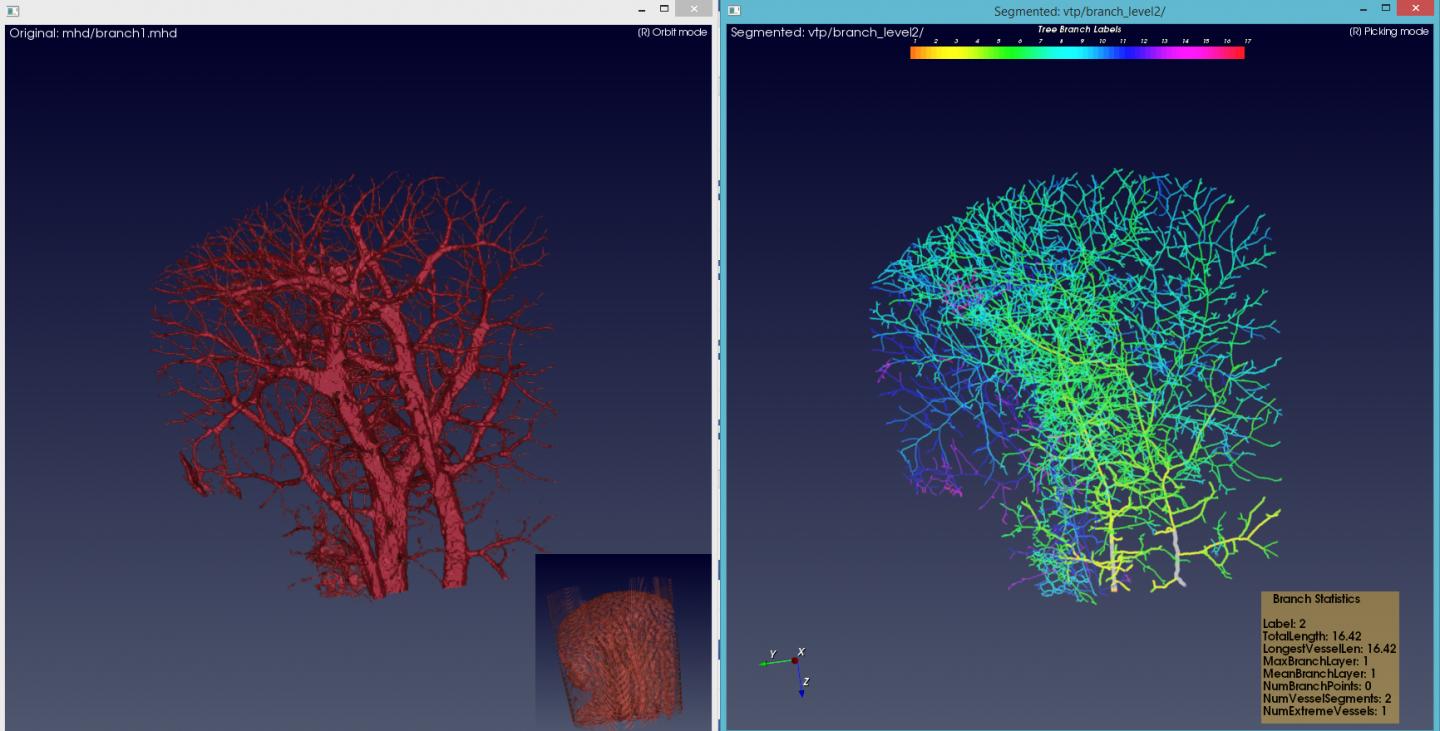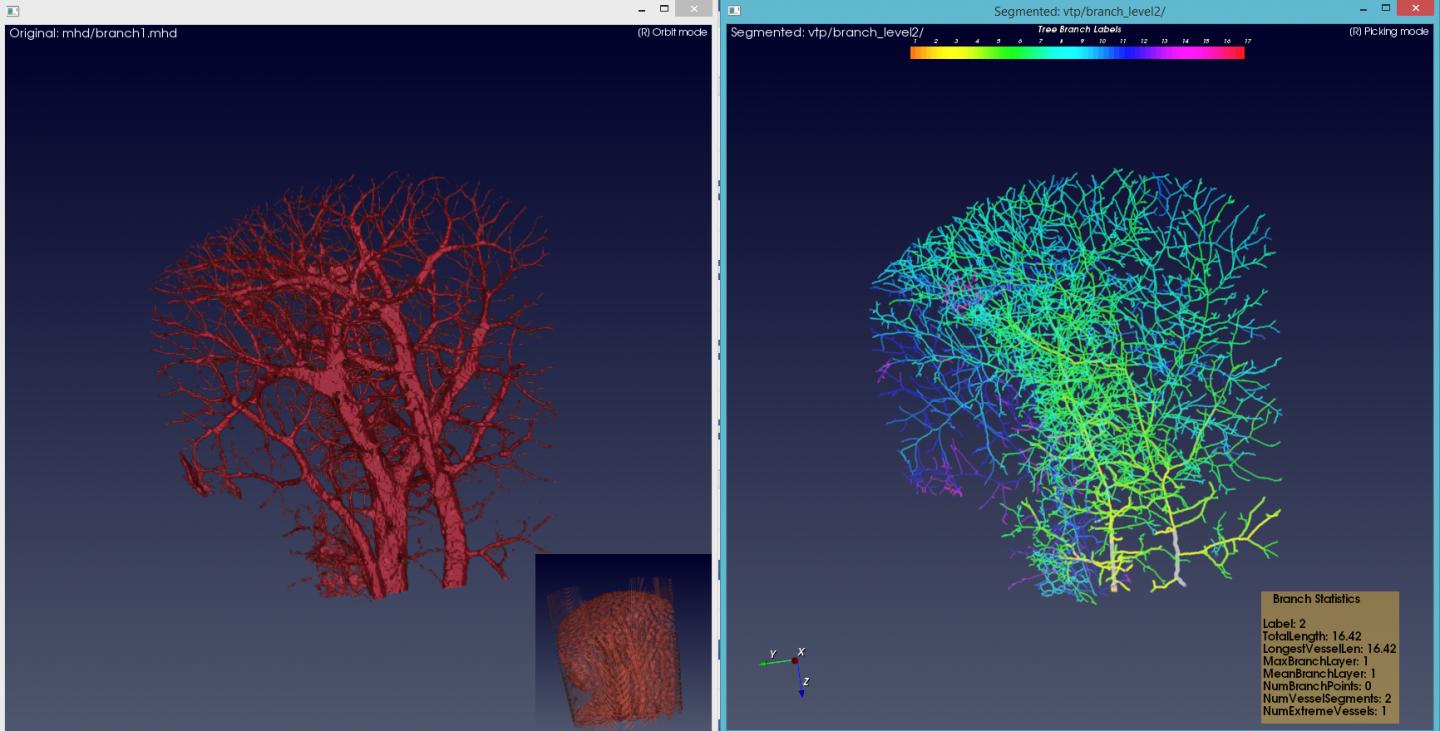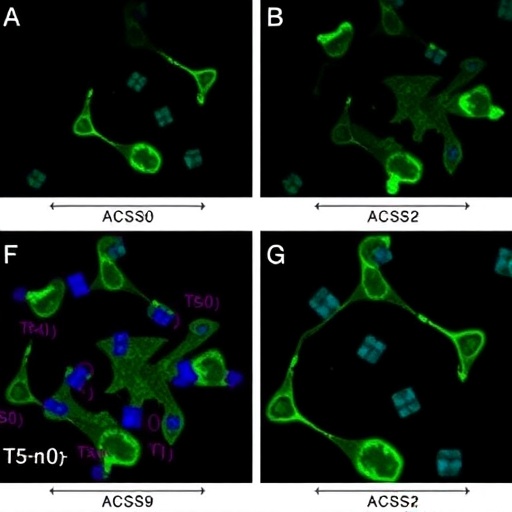
Credit: CSIRO
A new algorithm that detects the early formation of blood vessels could lead to early diagnosis of malignant tumours and improved success rates of treatment.
Researchers at CSIRO's Data61 are developing a software tool that could significantly improve the detection of angiogenesis – the development of new blood vessels – which is known to precede the growth of cancers.
Earlier detection of blood vessel growth may therefore lead to a faster diagnosis of malignant tumour growth, which is a key factor in successful treatment and patient survival.
In the study, Data61 researchers teamed up with researchers at the Shanghai Institute of Applied Physics, Chinese Academy of Sciences to produce images of the brains and livers of mice at various stages of cancer growth.
The researchers analysed 26 high-resolution 3D micro-CT images from 26 mice, produced by the Shanghai Synchrotron Radiation Facility (SSRF).
Using the images, the team developed a robust algorithm to generate an accurate representation of the vasculature, preserving the length and shape information of the blood vessel and its branches.
This new development was done using a technique called end-point constraints.
End-points are critical in preserving the geometrical features of new blood vessels, including branching patterns and the lengths of terminal vessels.
Until now, images of blood vessel structure taken from high-resolution imaging have only been able to produce a skeletonised view of blood vessel structure which provided limited detail and accuracy.
The accurate quantification of vasculature changes, particularly the number of terminal vessel branches, can play a critical role in accurate assessment and treatment.
Anti-angiogenesis treatment aims at preventing cancers from growing blood vessels.
The ability to continuously monitor subtle proliferations in blood vessels over time is essential, given that patients may react to anti-angiogenesis treatment differently.
The new software allows researchers to measure subtle changes in the proliferation of blood vessels, including the number and length of the blood vessel branches, and produces significantly clearer skeletons of the vasculature than previously possible.
Cancer Council Australia CEO Professor Sanchia Aranda said the capacity of cancers to form new blood vessels (angiogenesis) was a critical feature enabling cancer cells to spread to other parts of the body.
"This exciting project seeks to bring to life the tumour micro-environment through 3D synchrotron images of the vessels and will help to advance our understanding of this critical cancer progression process," Professor Aranda said.
"The hope is that through improved understanding new opportunities to disrupt angiogenesis will be identified and open pathways to new treatments.
"If we can stop cancers spreading we can reduce the number of people who die from the disease."
While the development of this new technique is a significant step forward, the Shanghai Synchrotron Beamline used to produce the images generates radiation levels unsafe for human imaging.
In order to progress clinical trials in humans, the researchers are looking for 3D imaging technologies and partnering with a hardware manufacturer that can produce high-resolution images with safe levels of radiation for humans.
Dr Dadong Wang, lead researcher on this project from Data61's Quantitative Imaging team, said that the applications of the software could be extended beyond 3D angiogenesis analysis.
"Our robust algorithms for the early detection and quantification of angiogenesis could potentially be a great step forward in the detection and treatment of cancer," Dr Wang said.
"However, they can also be applied to a wide range of other applications, such as analysis of 3D neurite outgrowth for drug development.
"While there is great interest in taking these findings further, there is still a long way to go before this new development can be applied to human patients.
"But we are very hopeful, and currently looking for collaborators and partners to take the technology to the next stage."
###
Media Contact
Sophie Schmidt
[email protected]
61-422-907-513
@csironews
http://www.csiro.au
############
Story Source: Materials provided by Scienmag





